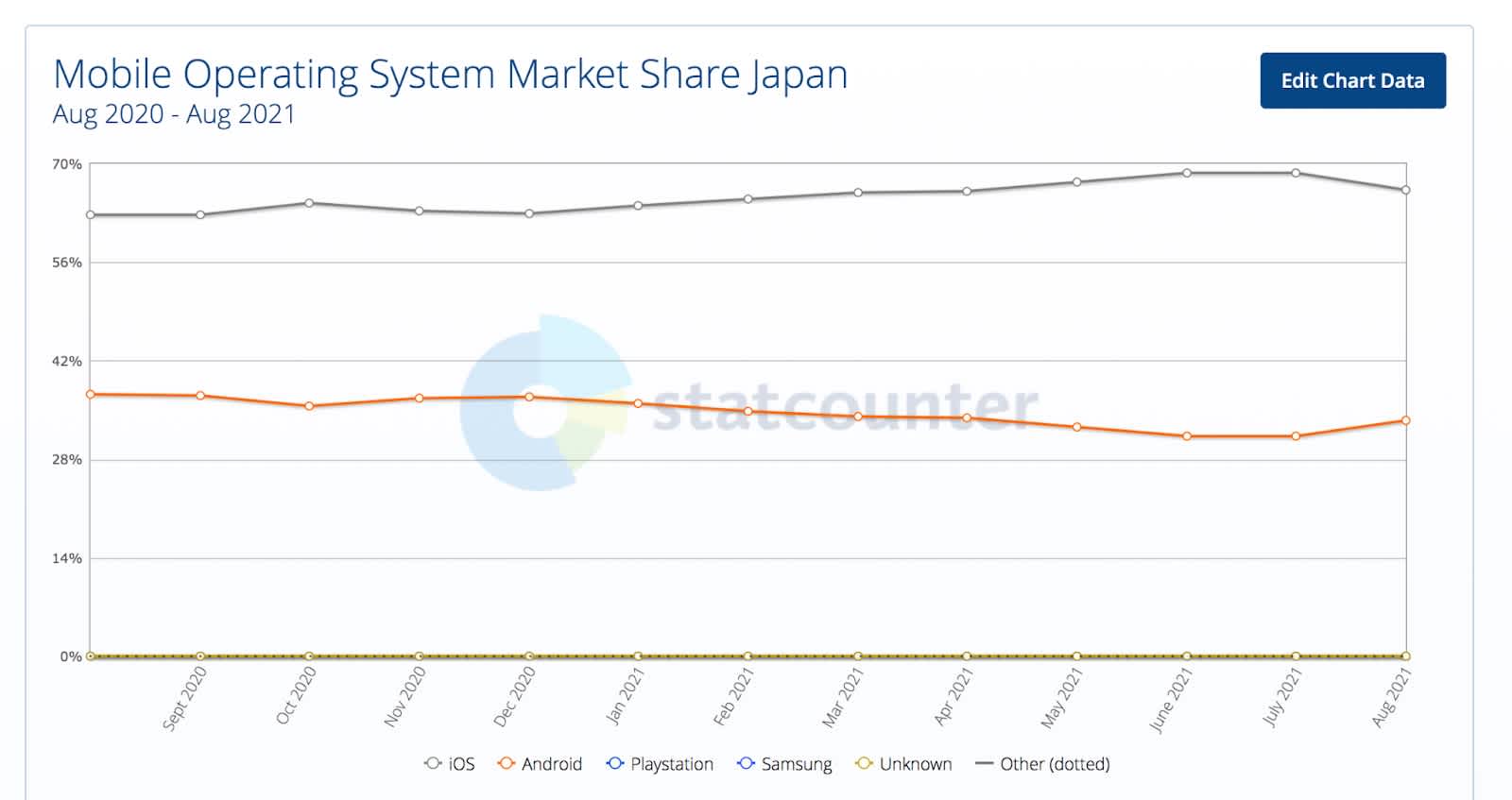Email best practices
Apple Mail demographics: What it means for email marketers
Should marketers panick about Apple Mail Privacy changes? It depends. Learn about Apple demographics to learn how it impacts your audience.

PUBLISHED ON
The long-used cornerstone for measuring email success – the open rate – could be in danger as a result of Apple’s changes associated with iOS 15. Their new Mail Privacy Protection, which most Apple Mail users are expected to opt into, essentially means that senders will no longer be able to accurately measure open rates, see information about opens by individual subscribers, or use a subscriber’s IP address to understand their location or generate dynamically-loaded content.
“For the longest time, we've encouraged email marketers to segment traffic based on engagement… now the open rate will not be a useful metric for things like reputation management or segmentation,” says Kate Nowrouzi, VP of Deliverability at Pathwire.
The result is that many email marketers are preparing to face challenges with testing subject lines or accurately measuring the reach of emails. It will also become difficult to use open rates to clean lists, build effective triggers, or segment lists. This could lead you to think, “No more open rates?! Broken personalization and automations?! I’ll never be able to tell what’s working! Performance is going to tank!”
So is it time to start looking for a new profession? Not exactly.
Table of contents
Apple’s mobile and desktop presence
Geographic distribution
The age of iOS of users
The wealth of iOS users
Who stands to lose the most?
Apple’s Mail Privacy changes apply to… Apple Mail.
So how much this impacts your email campaigns – and thus your level of concern – should be based on the proportion of your list that actually uses Apple Mail to read their messages.
This is where things get a bit tricky. While the changes will only affect emails opened with Apple Mail – not with the Gmail app or other clients – it impacts any email opened with Apple Mail.
“The client is the key thing here,” says Alex Rubin, Sr. Director of Partner Sales at Mailgun, “If people are accessing a Gmail address through Apple Mail, it doesn't matter where mail is hosted, it will be impacted.”
The greater percentage of your audience that uses Apple Mail, the more data you’ll lose. If most of your audience is comprised of ride-or-die Apple fans, you have some nervous nights ahead. If it’s just 3%, you may barely notice.
Apple use statistics: what it means for email marketers
The extent of the impact on your efforts depends solely on the percentage of your subscribers using Apple Mail. “For clients on our platform, data shows that Apple mail usage is around 33-37%,” says Kate. “This number is different from industry to industry... there are numbers as low as 4% and as high as 54%.”
We’re going to look at some stats about Apple products – who uses them, where they live, their income, preferred languages, etc. – to help you understand how hard these changes might hit your email marketing efforts.
And while this will help you roughly gauge just how concerned you should be, it’s not a perfect science. Even if someone prefers to use their iPhone to review emails, it doesn’t mean they’re using Apple Mail to do so.
“We’ve looked at our user base and the majority of people read Gmail email via the Gmail app. So even if you are on the latest iPhone on iOS 15, but you use the Gmail app to read your emails, that won’t be impacted. It will only be impacted if you have configured your Gmail accounts through your Apple Mail client on your iPhone, Desktop, or iPad.”
Kate Nowrouzi, VP of Deliverability at Pathwire.
So use the numbers in this article as a heads up. But there’s a much more precise way to measure the percentage of your audience that will be impacted. We’ll reveal that later.
Apple’s mobile and desktop presence
One billion people use Apple devices. This means you can safely bet that at least a few of your subscribers are amongst the Apple fanbase. And this massive reach is why the Mail Privacy Protection changes can’t be ignored.
A billion users is nothing to laugh at. But when it comes to PCs, if the world’s users were split like a pizza pie – into eight even slices – Apple would barely get their own piece. Apple only makes up about 15% of the global PC market, with less than 10% of its income originating from desktop sales. Depending on whether you count Chromebooks as a PC, Apple claims somewhere between 7.4 and 8.5% market share.

However, Apple’s mobile market share is more competitive than their PC efforts. According to StatCounter, in 2020, Android owned 73% of the worldwide mobile operating system while iOS took 27%.
So since Apple’s mobile devices are more popular than their desktop counterparts, if your audience prefers to check mail on their smartphone (more on that later), a greater percentage might be impacted. And that will only be exasperated as people move more towards mobile devices as a whole.
Like we mentioned, less than 10% of Apple’s income originates from desktop sales. iPhones make up 55% and iPads another 8%. So as subscribers’ preference for checking email skews towards mobile, the use of Apple Mail is likely to go along with it.
People use a variety of devices to check email
Apple’s mobile market share is more competitive than desktop. So does that make Apple Mail more or less influential when it comes to Apple Mail as an email client?
People still use a variety of devices to view their messages. While Email Monday says at least 50% of emails were opened on mobile in 2018 (a number we suspect has only increased), it depends dramatically on age. 40% of people under 18 open emails on mobile first. But in the 55-67 age group, that number drops to 8%.
Geographic distribution
iPhones are the long-standing favorite of Americans. At its peak, Android passed 45% usage, though briefly. iOS usage was more than 60% as of early 2021.
But it’s not just the US. Apple’s mobile iOS dominance is even more pronounced in Japan. Apples boasts a nearly 70% market share of mobile operating systems as of mid-2021.

In the United Kingdom, Apple narrowly leads mobile market share. iPhones were the preferred choice over the last year but by the narrowest of margins.
But while iOS has a strong presence in Japan and the UK, Apple’s American revenue outpaces the rest of the world. This graph from Business of Apps breaks down Apple’s revenue by its top regions. Regardless of the kind of device sold, Apple claims almost twice the revenue from the Americas as it does from Europe. Its American revenue is three times greater than China’s and six times greater than Japan or Asia Pacific.

Apple’s American revenue outpaces the rest of the world.
But revenue can be deceiving – it’s not a perfect ratio to users. It does, however, hint to us that if your subscriber base is mostly located in the Americas, you might stand more to lose than if it’s mostly in Africa, which didn’t even make this list.
English is the language of iOS
iOS seems to be the preference among English speakers. Apple is on par, or even beats Android, in a relatively small group of major countries (all of which speak majority English except for Japan and Sweden):
The United States
The United Kingdom
Sweden
Canada
Japan
Australia
Notably, English-speaking Australia’s iOS usage also outpaces the global average.
Europe provides further proof of an English language preference. To the point about iOS being preferred by English speakers, iOS only has 30% market share in Europe as a whole. But in the English-speaking UK, it’s closer to 50%.
The age of iOS of users
iOS smartphones are popular with the young crowd.
If 16-24 is your key demographic, your ears should perk up. Younger demographics don’t just prefer to view emails on mobile, they tend to lean towards iOS devices specifically. This is especially true in America, where 40% of iOS smartphone users in 2019 were concentrated in a relatively small age range: 16-24. In fact, only 30% of users in this demographic used Android.
However, older demographics spend more on iOS devices. This stat has aged a bit itself, but a 2015 study suggests that individuals 65+ spent more than any other demo. So if your audience is older, you can’t ignore the Apple Mail Privacy update either.
The wealth of iOS users
Apple products are priced at a premium, so it’s not a major surprise that Apple users have higher incomes than those that use competing products.
Yes, Apple users are wealthier. In fact, in 2014, Comscore estimated that, in the United States, iPhone users made 40% more than the median Android user. A 2018 study found similar results.
So should you worry? How to know for sure.
If your audience is decidedly affluent, young, English-speaking, and located in the United States, UK, Japan, Sweden, or even Australia, you stand to lose the most.
Then again, it’s not a rule; it’s a trend. Your audience might meet every single one of the above criteria and none of them could own a single Apple product. While the stats in this article are super interesting, they probably don’t give you complete clarity about how many of your subscribers will be impacted.
The only way to know for sure, and thus the degree of resources that need to be allocated to your efforts, is to look at your own data. What email clients, exactly, does your audience use right now?
Email on Acid’s email analytics tool will actually tell you this information. That’s right – you don’t have to guess. You can determine, with accuracy, how much of your audience will be impacted and then take appropriate action.
What’s next?
By now, you’ve probably figured out that you can’t ignore this change. No matter your audience, you’re likely going to feel at least some impact. We suggest that you look at your data to determine the extent of your audience that prefers Apple Mail. This can help guide the appropriate amount of resources to prepare.
And there are things you can do, like segmenting your lists based on their preferred email client. If you do this, you may be able to use open rate data from minimally-affected segments to continue to guide your campaigns in some capacity.
But the point is that this is a big change and you can’t go forward without being informed. We’ve put together a lot of content to help you prepare, including our guide to the Apple Mail Privacy Policy update, an article to help marketers prepare for the Apple Mail changes, and an amazingly-helpful webinar about adapting to Apple Mail Privacy Protection. Stop what you’re doing, go read the posts and watch the webinar, and start planning for the future.
Still interested in learning more about the Apple Mail Privacy Policy? Catch our Apple Mail panel at Email Camp to hear directly from Pathwire and Bloomreach experts! Register for Email Camp 2021 to get access to the best keynotes and panels!








